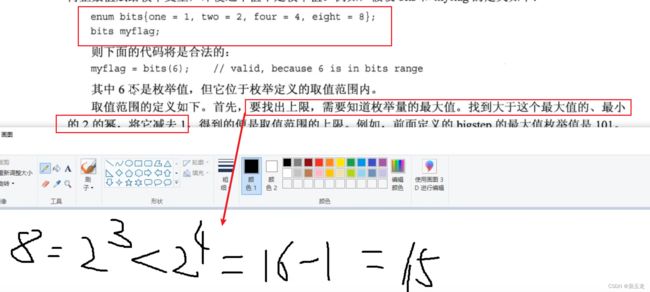C++基础:字符串
字符串
字符串是一种非常常见的数据类型,用于存储和操作文本数据。C++提供了多种方式来表示字符串,其中最常用的是使用std::string类。以下是关于C++字符串的一些基本信息和操作示例:
字符 : ’ '(单引号是一个字符,如果要赋值成数组后面要加上 /0 其中 /0 为空字符),
字符串: " "(双引号是一个字符串是默认带 /0 的):其实双引号代表着的是一个地址。
strlen:字符串的有效长度,这里是指,,如果设置为15个长度数组,但是只用到了4个有效数组这个函数就只返回4个字节
strlen(字符串变量)
字符串几种类型
字符串复制:strcpy(变量1,变量2):对变量复制
字符串的拼接:strcat():字符串的拼接
1:字符串包含头文件:要使用string类,您需要包含头文件。
#include 2:创建字符串变量:您可以使用string类创建字符串变量。
std::string myString = "Hello, World!";
3:字符串输入和输出:您可以使用cin来输入字符串,并使用cout来输出字符串。
#include 4:字符串拼接:您可以使用+运算符将两个字符串拼接在一起。
std::string str1 = "Hello, ";
std::string str2 = "World!";
std::string result = str1 + str2;
struct inflatable:结构体
struct inflatable
{
char name[20];
float volume;
double price;
}
字符串例子
#include 创建枚举量,枚举赋值必须是整型,int或long或long long
enum spectrum{red,orange,yellow,green,blue,violet,indigo,ultraviolet};
括号内的是枚举量
spectrum :枚举类
spectrum band; :通过枚举类创建枚举变量
枚举的取值范围如下,首先,
要找到上限,需要知道枚举的最大值,找到小于这个最大值的,最小的2的幂,将它减去1,得到的便是取值范围的上限。
要找到下限:需要知道枚举量的最小值,如果它不小于0,则取值范围的下限为0,否则采用与寻找上限方式相同的方式,但加上负号,列如,如果最小的枚举量为-6,而比他小的,最大的2的幂是-8,因此下限为-7
上限:
 下限:
下限:
